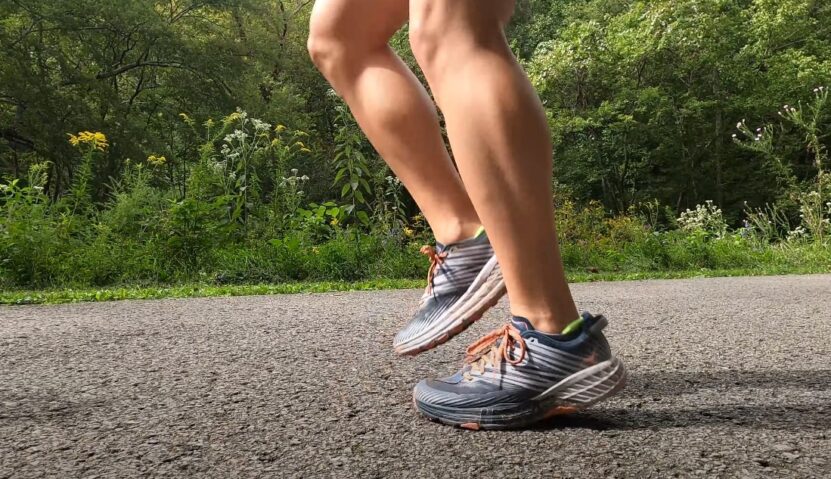Running hills can feel like a brutal workout, but that’s exactly why it works. If you’re serious about becoming faster, stronger, and more resilient, hill sprints should be in your routine. Picture this: short bursts of all-out effort where your legs burn and lungs feel like they’re working overtime.
Sounds tough, right? But the rewards are massive. From building explosive power to improving mental grit, these uphill battles train both your body and mind. Let’s break down why tackling those hills can take your fitness to the next level.
7 Benefits of Hill Sprints
- Strengthen Your Legs and Build Explosive Power
- Reduce Injuries While Sprinting
- Improve Your Running Form Naturally
- Boost Mental Toughness and Discipline
- Increase Your Endurance and Stamina
- Burn More Calories in Less Time
- Run Faster and Stronger on All Terrain
1. Strengthen Your Legs and Build Explosive Power

Hill sprints are a game changer for leg strength. They force your muscles to work harder than they would on flat terrain, particularly targeting the glutes, quads, hamstrings, and calves. The incline creates resistance that makes every step a challenge, helping you develop explosive power.
Muscle Activation and Strength Gains
When sprinting uphill, you’re fighting against both gravity and the slope. This requires more effort from your lower body, leading to greater muscle activation. As a result, hill sprints not only build strength but also train your muscles to generate maximum force with every stride. Over time, this translates to quicker sprints and stronger runs on all terrain.
Low Injury Risk, High Benefit
Unlike flat sprints, or even a marathon, hill sprints keep you from reaching your absolute top speed, reducing the chances of injury. The slower speed allows you to push your muscles to their limits without the high risk of strain often associated with flat-ground sprints. This makes hill sprints ideal for athletes who want all the power and speed benefits of sprinting without the typical injury risks.
An Effective Alternative to Weight Training
If lifting weights isn’t your thing, hill sprints are a powerful alternative for building lower body strength. The resistance provided by the incline offers the same benefits as leg presses or squats, without needing equipment. This makes hill sprints not only practical but accessible—just find a decent hill and get started.
How to Get Started
Begin by finding a hill with a moderate incline. Sprint uphill at full effort for 8-10 seconds, then take your time walking or jogging back down for recovery. Start with 4-6 sprints if you’re a beginner and gradually work up to 10 as you get stronger. With consistent effort, you’ll notice significant gains in your leg strength and overall speed.
2. Reduce Injuries While Sprinting

One of the biggest advantages of hill sprints is that they significantly reduce the risk of injuries often associated with high-speed sprinting. The incline naturally limits your top speed, meaning less impact on your joints and muscles while still providing an intense workout. This slower pace minimizes the likelihood of strains and pulls, making hill sprints a safer option compared to flat-ground sprints.
Controlled Speed and Safer Stride
When sprinting uphill, it’s nearly impossible to reach maximum speed due to the resistance provided by the incline. This controlled speed reduces the jarring impact on your knees, ankles, and hips, which are common areas for injuries in traditional sprinting. The uphill angle also encourages a safer running form, helping you avoid harmful heel strikes and excessive joint stress.
Strengthening Key Stabilizer Muscles
The nature of hill sprints forces your stabilizer muscles, like those around the ankles and knees, to work harder. These muscles play a crucial role in maintaining balance and preventing injury, especially during high-intensity activities. By strengthening these often-overlooked muscles, hill sprints help build a solid foundation, reducing the risk of common injuries like sprains or strains.
Gradual Progression and Injury Prevention
For those new to high-intensity training, hill sprints offer a way to gradually build up strength and endurance without overwhelming your body. The slower, controlled movements allow you to focus on proper form and build up your muscles in a way that flat-ground sprints can’t. This makes hill sprints an excellent choice for both beginners and seasoned athletes looking to avoid injury while still pushing their limits.
Practical Tips for Injury-Free Hill Sprints
- Warm up thoroughly with dynamic stretches before starting your hill sprints to prepare your muscles and joints.
- Focus on maintaining proper form by leaning slightly forward, keeping your chest up, and driving your knees upward.
- Start with 4-6 sprints and gradually increase as your strength improves. Don’t rush the recovery phase—take your time walking or jogging back down.
3. Improve Your Running Form Naturally

Hill sprints naturally enhance your running form by forcing you to engage proper techniques. The incline makes it difficult to run with poor posture or inefficient strides, automatically correcting common mistakes that can lead to injury or reduced performance.
Encourage Proper Knee Drive and Foot Strike
When sprinting uphill, you naturally lift your knees higher to maintain momentum. This high knee drive is critical for efficient running. It reduces the chances of overstriding and landing on your heels, which are common issues in flat-ground running. Instead, you’re more likely to land on your forefoot or midfoot, which is ideal for reducing impact and improving speed.
Boost Arm and Core Engagement
The added resistance of the incline also forces you to engage your core and arms more effectively. Proper arm swing, where your arms move in sync with your legs, becomes crucial for maintaining balance and power. This enhanced coordination between your arms, core, and legs helps build a more fluid and efficient running form overall.
Shorten Your Stride for Efficiency
Hill sprints naturally shorten your stride, which is actually beneficial for improving running efficiency. Short, quick strides reduce energy expenditure and keep your momentum moving forward. On flat terrain, this translates into a faster, more consistent pace with less energy wasted on unnecessary motion.
How to Use Hill Sprints to Improve Form
- Focus on Posture: Keep a slight forward lean, chest up, and shoulders relaxed. This posture allows for easier breathing and maintains forward momentum.
- Drive with Your Knees: Focus on lifting your knees higher than you would on flat terrain, promoting proper foot placement and reducing heel strikes.
- Engage Your Core: Keep your core tight and arms swinging powerfully to assist in driving your legs forward.
4. Boost Mental Toughness and Discipline

Hill sprints aren’t just a physical challenge—they push your mental limits too. Sprinting up a steep incline requires determination, grit, and a refusal to quit when your body wants to slow down. By regularly including hill sprints in your routine, you’ll not only build strength and speed but also develop the mental resilience needed to tackle tough workouts and races.
Overcoming Discomfort Builds Confidence
When you’re charging up a hill, every muscle is firing, and your lungs are working overtime. It’s in these moments of discomfort that real growth happens. Training in this uncomfortable zone helps you build confidence, knowing you’ve conquered tough conditions in practice. This confidence carries over into races or other high-stress situations, where mental toughness often makes the difference.
Develop Discipline Through Repetition
Hill sprints demand consistency and discipline. You’re required to push hard with every repetition, even when fatigue sets in. The self-discipline needed to maintain high effort through multiple sprints trains your mind to stay focused and resilient in challenging scenarios. This discipline doesn’t just benefit your running—it can translate into other areas of your life, helping you stay motivated and focused on long-term goals.
Mental Focus and Form Under Pressure
Running hills forces you to maintain proper form while under physical stress. Staying focused on your posture, arm swing, and stride when your legs are burning teaches you how to keep calm and collected when things get tough. This ability to stay composed and maintain efficiency even when tired is a valuable skill in any demanding situation.
Tips for Building Mental Toughness with Hill Sprints
- Set Goals for Each Session: Whether it’s completing a specific number of sprints or maintaining a certain intensity, having clear goals keeps you focused.
- Push Past the Plateau: When you feel like you can’t do more, try adding one more sprint or extending the distance slightly. Pushing your limits helps break mental barriers.
- Consistency is Key: Incorporate hill sprints weekly. The more you train your mind to embrace discomfort, the tougher you’ll become.
5. Increase Your Endurance and Stamina

Hill sprints are one of the most effective ways to build endurance and stamina, making them a key component in any serious training regimen. The intensity of these short, explosive sprints trains your body to operate at its maximum capacity, leading to improvements in both aerobic and anaerobic systems.
Quick Access to Maximum Heart Rate
When you sprint uphill, your heart rate spikes rapidly. Hill sprints get you to your maximum heart rate much faster than running on flat ground, which typically requires longer distances to achieve the same effect. Reaching and sustaining this high level of effort trains your cardiovascular system to handle greater stress over time. As your body adapts, you’ll notice improvements in how quickly you recover and how long you can sustain intense efforts during workouts.
Enhanced Muscular Endurance
The repeated explosive efforts required during hill sprints build endurance in key running muscles. Over time, your glutes, quads, and calves adapt to the increased workload, allowing you to maintain speed and power over longer distances. This enhanced muscular endurance is critical not only for sprinting but also for longer races and extended training sessions.
Improved Recovery Rates
One of the benefits of hill sprints is that they teach your body how to recover faster. As you practice, your rest intervals between sprints naturally shorten, allowing you to increase the intensity and volume of your workout. This faster recovery translates into better endurance, as your body becomes more efficient at clearing out fatigue and replenishing energy stores.
Practical Tips to Maximize Endurance Gains
- Start with Short Sprints: Begin with 6-8 second sprints, gradually increasing the duration as your endurance builds.
- Prioritize Consistency: Include hill sprints once or twice a week for sustained endurance improvement.
- Focus on Breathing: Controlled breathing during high-intensity efforts helps your body adapt to the demands of hill sprints, improving stamina over time.
6. Burn More Calories in Less Time

Hill sprints are one of the most efficient ways to burn calories, making them an ideal choice for anyone looking to shed fat or improve overall fitness. The combination of high intensity and resistance provided by the incline leads to significant calorie expenditure both during and after your workout.
High-Intensity, High-Reward
Hill sprints are a form of high-intensity interval training (HIIT), which is known for maximizing calorie burn in short periods. The explosive effort required to sprint uphill not only increases your heart rate rapidly but also engages large muscle groups like your glutes, quads, and hamstrings, all of which burn more energy.
Studies show that high-intensity workouts like hill sprints can lead to continued calorie burn long after the session is over due to the “afterburn effect” (excess post-exercise oxygen consumption, or EPOC). Logically, that is not the case with marathon, as things are a little different here.
Increased Metabolism
The metabolic boost from hill sprints is significant. Since hill sprints require intense bursts of energy, your body continues to burn calories at an elevated rate even after the workout. This prolonged calorie burn helps with fat loss and contributes to overall metabolic health. Incorporating hill sprints a few times a week can enhance your metabolism more effectively than steady-state cardio exercises.
More Calories Burned Per Minute
Compared to running on flat terrain, hill sprints can burn up to double the calories in the same amount of time. The added resistance of the incline forces your body to work harder, leading to greater energy expenditure. This efficiency is ideal for those with tight schedules who want to maximize their workout benefits in a short period.
Practical Tips to Maximize Calorie Burn
- Short and Intense Bursts: Keep your sprints to 8-10 seconds of maximum effort, focusing on all-out intensity rather than duration.
- Reduce Rest Time Gradually: As you get fitter, reduce the recovery time between sprints to keep your metabolism elevated.
- Consistency is Key: For optimal results, aim to include hill sprints in your routine 1-2 times per week.
7. Run Faster and Stronger on All Terrain
Hill sprints not only improve your power but also make you a more versatile runner on all terrains. Training on inclines strengthens the key muscles and improves the biomechanics needed for both uphill and downhill running. Whether you’re tackling hilly racecourses or just trying to improve your flat-ground speed, hill sprints can help you become faster and more efficient.
Improved Stride Efficiency
Running on a hill forces you to optimize your stride. Each step is deliberate and requires maximum force, training your legs to become more efficient with every movement. As a result, you’ll develop a smoother, more powerful stride that translates into faster running speeds on flat terrain. This efficiency is crucial for shaving time off your runs, whether in races or everyday training.
Better Transition Between Terrains
Runners often struggle with transitioning between flat and hilly sections of a course. Hill sprints prepare you for these changes by enhancing your ability to maintain speed and energy regardless of the terrain. The strength and endurance gained from hill sprints make it easier to power through inclines without slowing down and recover quickly when the terrain flattens out.
Boosted Leg Power for Speed
The incline demands more explosive leg power, which is essential for accelerating quickly. The stronger and more powerful your legs become from hill sprints, the faster you’ll be able to run in any condition. This increased leg strength is especially beneficial for sprinters, trail runners, and anyone looking to improve their speed over short or long distances.
Practical Tips for Applying Hill Sprints
- Vary Your Hill Workouts: Mix short, intense sprints with longer, moderate-intensity repeats to build both speed and endurance.
- Focus on Form: Maintain proper posture, keep your knees high, and drive with your arms to maximize efficiency.
- Incorporate Weekly: To see noticeable gains, integrate hill sprints once or twice a week, adjusting intensity based on your goals.
FAQs
Conclusion
Hill sprints may be tough, but the benefits are undeniable. Whether you want to get faster, build strength, improve your running form, or just challenge your mental grit, adding hill sprints to your routine can take your training to the next level. They offer a unique combination of power, speed, and endurance benefits that are hard to match with any other exercise.

